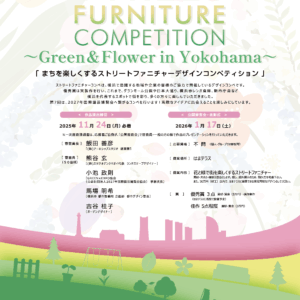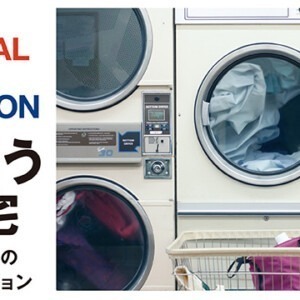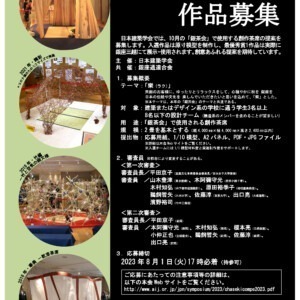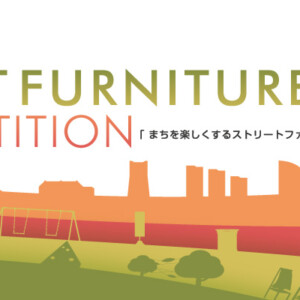
【7/10 提出締切】ARCASIA Students’ Design Competition 2023|JIA国際委員会
【7/10 提出締切】ARCASIA Students’ Design Competition 2023|JIA国際委員会
Objective
The Students’ Architectural Design Competition aims to provide an arena for students from ARCASIA member Institutes to participate in ARCASIA activities. It is an opportunity for students from different cultures to exchange and share ideas on a particular design issue that is raised by ARCASIA every year.
Competition Theme
Designing a Future-Ready Community Responding to the Most Challenging Social Condition
As the world constantly faces challenges brought by population surges, climate change, and economic and health issues, its effects are mainly felt in the smallest unit of a city – the community.
In fact, the COVID-19 pandemic has viciously exposed the fragility of different countries’ health and social services systems, thus intensifying the need to resolve long-term problems which calls for a more top-down and multi-sectoral approach to sustainable development.
The Asian Development Bank (ADB) responds to several development issues in the Asia Pacific region: agriculture and food security, education, climate change, risk management, finance, fragile and conflict-affected situations (FCAS), gender equality, governance, and health to name a few. ADB presents mitigation and adaptation measures to combat multiple social, environmental, and economic key issues that inhibit sustainable development. Below are brief descriptions of the adverse effects of each key issue. These effects are primarily encountered by communities as consequences of neglect, the inaction of authorities, and cultural norms embedded in the socio-political system of different countries.
Environmental
Climate-related disasters lead to agricultural losses and multiple adverse impacts on food production and supply. Scarcity of food upon increasing demand affects food price inflation which imbalances consumption and impedes further the marginalized to be freed of poverty. The Covid-19 pandemic yielded an increase in undernourished people in Asia due to hunger and malnutrition despite growing prosperity. Climate change also affects biodiversity and natural capital, supporting economic growth and people’s lives.
According to International Energy Agency, World Energy Outlook 2020, around 150 million people in Asia and the Pacific still lack access to electricity, while many more cook using unhealthy, polluting fuels, curbing economic growth and social development.
More than half of the total carbon emissions in the world come from Asia and the Pacific region. Hence, a transition to clean energy is key to tackling climate change.
Social
Data from 19 countries in Asia and the Pacific by Global Internal Displacement Database 2020 shows that there are 6.4 million people who were displaced because of conflict and violence. These IDPs or internally displaced persons need context-specific tailored support for fragile and conflict areas situations (FCAS) and small island developing states (SIDS) to help build resilient and stable developed communities even they are in the most vulnerable environments.
Unequal access to education is still a lingering problem in the Asia-Pacific region. Children who are unable to go to school, even in countries where enrollment levels are high, tend to be from the poorest and most disadvantaged in society. Gender bias in education is still evident wherein girls and women are often at a disadvantage in most developing member countries (DMC)s. Other marginalized from mainstream education in many countries include young people in rural areas, those from ethnic, religious, or linguistic minorities, refugees, and those living with disabilities.
Gender equality needs to be pursued because it is critical for sustained economic growth, faster poverty reduction, and inclusive development. Investments in women are missed opportunities to correct gender disparities and to capture and unleash women’s economic and human capital potential.
Economic
Asia’s infrastructure needs as economies expand and climate change impacts, remain a huge challenge and must include private and public sectors. ADB Data for Infrastructure Investment Needs, 2016-2030 tells us that Asia needs an investment of $ 1.7 trillion per year in infrastructure to maintain its growth momentum, tackle poverty, and respond to climate change. Investment in power infrastructure leads to the top priority need at $ 14.7 T, followed by Transportation, at $ 8.3 T, Telecommunications, at $ 2.3 T, and Water and Sanitation, at $0.8 T.
Public-private partnerships can help address Asia and the Pacific’s huge infrastructure deficit and boost development. It remains a major challenge that the region lacks quality bankable projects to attract private capital for infrastructure development. PPPs can be used to finance and run not only traditional infrastructure, but also the transport sector, education, health, and other social sectors.
The UN Sustainable Development Goals (SDGs)
Keeping the future in mind, the challenge of this competition is to integrate innovative design approaches to social, economic, and environmental concerns that directly influence the quality of life in a community. The main problem should be anchored on an arising social condition in the designer’s selected community. The design should possess sustainable responses to a circular economy, people-centeredness, safety, resilience, inclusivity, and heritage preservation.
The designer must align his/her project framework with the United Nations’ Sustainable Development Goals (SDGs). He/She must select the most applicable SDGs in his/her decided problem. Taking the latest reports or stats as baseline reference from each SDG, the designer must undergo desk research on the specific context of the local region where his/her chosen community belongs.
The design proposal must clearly present how his/her architecture responds to the problems presented and how it could be pivotal to the sustainable growth of the community.
Site Criteria:
■The site should be catering to at least 3,000 population or bigger.
■It should have a conspicuous social condition that needs to be addressed, and architecture can be a vital solution.
■It should be a place that has the potential for physical, environmental, economic, and social growth.
References:
https://www.adb.org/what-we-do/topics
https://sdgs.un.org/goals
建築を学んでいる学部生
提出締切:2023年7月10日(月)*(23:59 UTC+8)
結果発表:2023年8月18日(金)
■提出物一式のデータをメールにてJIA本部事務局(jiacontact@jia.or.jp) までお送りください。
(パネルを郵送で送らないようにお願いいたします。)
■ファイル名はアルファベット半角で応募者の名前(またはチーム名)の後に“(Japan)”とお書きください。
■提出書類は全て英語です。
国内審査で3作品を選出し、ARCASIA学生コンペ事務局にJIAからデータを送付いたします。
選出された方にはメールでご連絡いたします。
詳細及び応募要綱、エントリーフォームについては下記URLよりご確認ください。
https://jia-intl.org/web/wp-content/uploads/2023/05/Students-Architectural-Design-Competition-1.pdf
公益社団法人 日本建築家協会(JIA)
本部事務局 jiacontact@jia.or.jp
Architects Regional Council Asia
⇒HP








この記事へのコメントはありません。